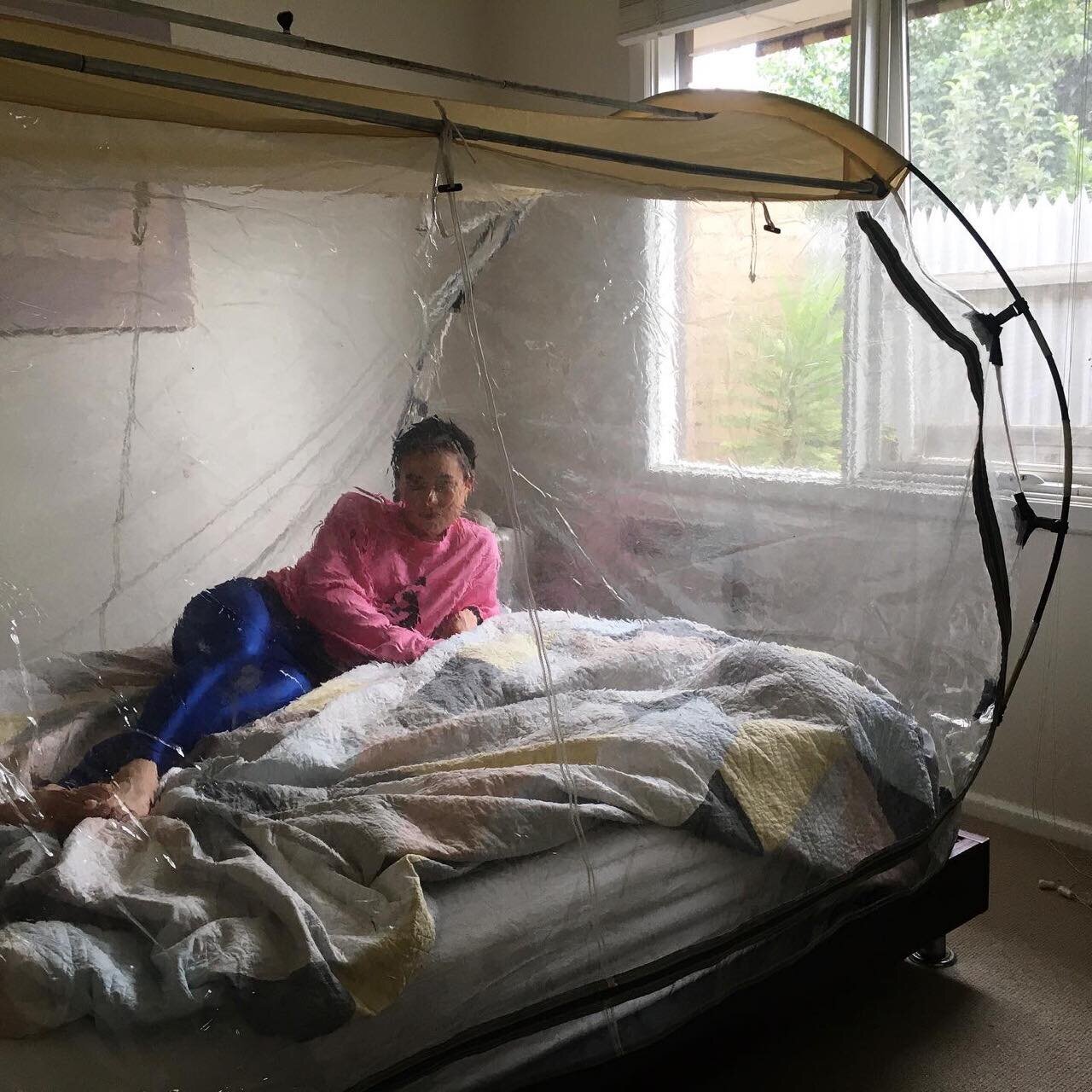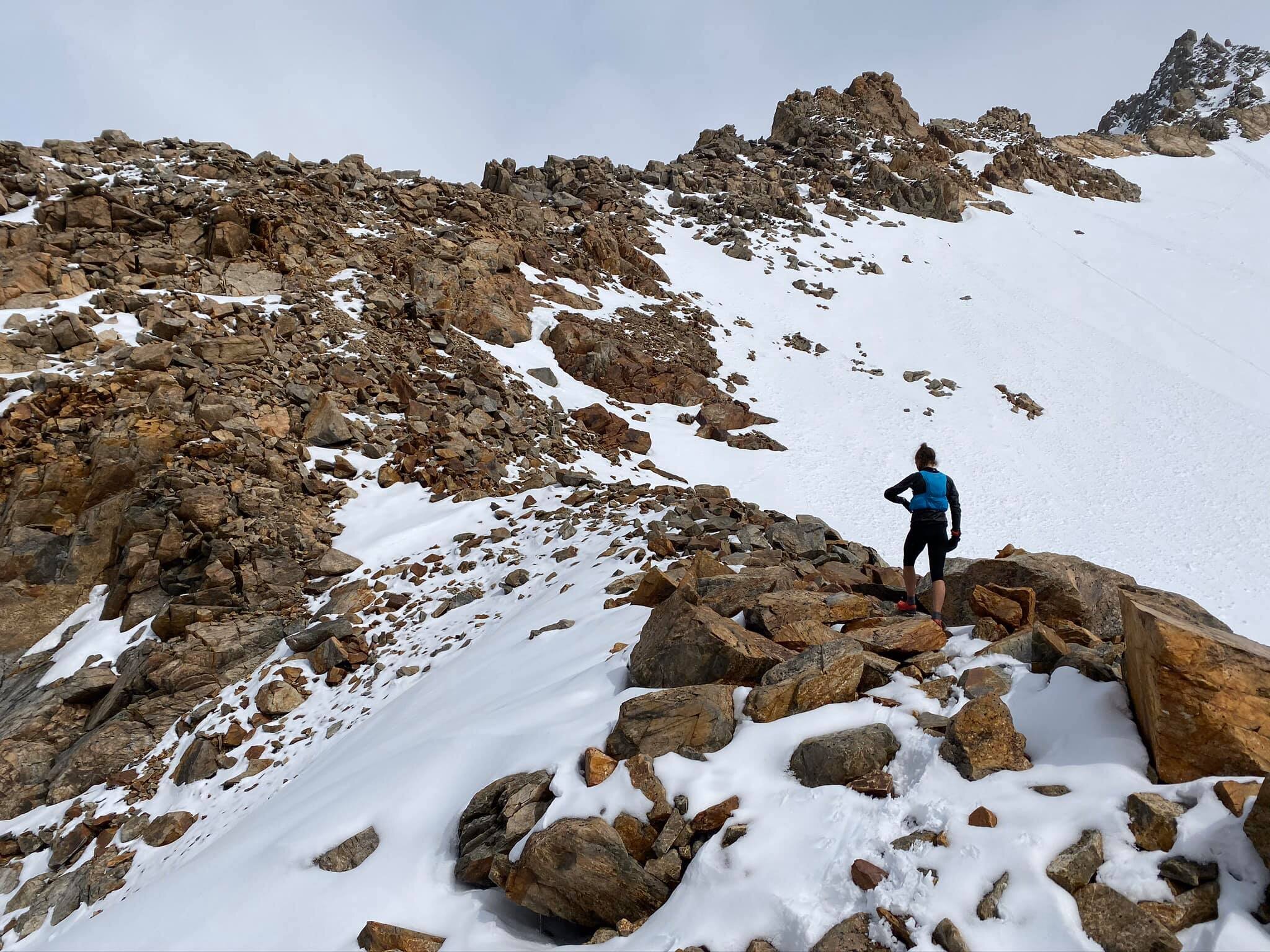Self-Experimentation: Embrace Your Inner Nerd
By Catriona Bisset and Simone Brick, in conjunction with Revvies Energy.
No matter what level of sport you’re at, trying to progress towards your athletic goal is essentially one big science experiment on your body. You start with a million questions and no answers, then slowly through experience and reflection you gather information that helps decide which direction to go next. .
In ‘normal’ life, staying focused on answering these questions can be difficult. With constant distractions and new events every weekend, we’ve all been caught saying yes too often, putting short-term thrills over long-term gains. One silver lining of being forced to take a break from competition is being given an uninterrupted chance to find what actually works best for us in training and racing. We can take a step back and ponder; Do I really know what I think I know?
‘I’m (Sim) at the start line of my first ever half marathon. I’m wearing the socks that I wore for my fastest long run, ate a bowl of porridge exactly 2 hours 45 mins before start time (because the internet said to), and went into a panic five minutes ago thinking I almost forgot to put my lucky hair tie in. I set off, placing all my hope of achieving my goal time of 1hr 45min on these little things, thinking they have all the significance in the world. I run hard, and during the race I mentally draw upon the training I have done and support from my family on the sidelines. But then I cross the line under goal time, and of course my first thought is ‘Wow, these socks and this hair tie really ARE lucky’.
Was it really the socks? Probably not. Then what was it? That’s where things get murky. When appraising things that are meaningful to us, we sometimes hold on to what we think we know so tightly that we lose touch with what we rationally know. Problem is, unless we keep track of the big picture — of what we do in the weeks and months before our best performances — we’ll never know if what we’re doing is little better than superstition, or if it’s something with a substantial basis that should give us true confidence.
Embarking on the mission of truly figuring out what works on our best days will help keep us focused and motivated in the short term while the usual carrot of race day no longer dangles. It’s also a great way to stay focused on long-term goals, because any answers we find will benefit us when start lines reappear on the horizon. Through experimentation, you can find new ways to get the most out of yourself, without getting distracted by what others are doing or having direct comparisons in training cloud your focus.
Let’s get into the nitty gritty.
There’s a smart way and a not-so-smart way of conducting self-experimentation. All of a sudden deciding to see how your body handles a 50% increase in training load or testing some “miracle” technology may seem like fun, but they risk a lot and — crucially — don’t tell you all that much about what worked in the past.
Start with where you’re at: think back to races that went to plan and try to remember something you did in the lead up that may have helped over the long term. Test that first — with the help of a coach, dietician, or doctor — then you’ll either truly know what you think you know, or debunk a superstition that was holding you back.
This is where the term ‘being an N of 1’ comes in. When scientists start an experiment, they require two things; a well-considered hypothesis (what they think will happen on the basis of past evidence) and people to test it on (known as the ‘n’, for number of participants). Being an N of 1 essentially means coming up with a hypothesis that’s personally unique and meaningful for your goals, and testing it properly on yourself. When building a hypothesis, make sure it’s trying to answer something you really want to know and that you genuinely think could benefit you — that way it’s easier to stay motivated and have fun with it.
Once you’ve looked at your goals and brainstormed a hypothesis about how to get there (examples below), testing is the fun part. To do this properly, take the time to plan, record what you are doing in some way (paper and pen will do; an online spreadsheet is even better for longevity and to share with your team), and then reflect on how you felt or performed afterwards.
Sometimes, you need to commit to doing this for a prolonged period of time, say 30 days, to figure out if you are on the right track, and sometimes once is enough to know that it doesn’t work for you. The best way to figure out which of those scenarios you’re in is to work closely with a coach and/or medical professional who can keep a more objective opinion. Otherwise, we can get stuck chasing things that we really want to work, but don’t — or drop things that take a little more perseverance before we can really know whether it should be dropped or not.
Here’s where examples will probably come in handy. Since we come from such different running backgrounds and have different long-term goals, each of our experiments at the moment look very different. Each area of experimentation is addressing something that at least has the possibility of improving our respective disciplines, i.e. neither of us is trying to become a fantastic 5K road runner all of a sudden.
Sim’s long-term goal: Rank top 10 in the Mountain Running World Cup Series.
Hypothesis: New physical stimuli in training will help develop overall running efficiency and stop me from comparing to my usual sessions
Test: Coach setting me brand-new training sessions such as random fartleks, shorter hill sprints, and different track distance combinations - then testing effects with time trials.
Hypothesis: A peanut butter and banana wrap 2 hours before is what I race and train best on.
Test: Working with my dietician to test different fueling techniques before sessions and long runs to compare energy/performance over time. (What we have already found - different fuels work for different kinds of sessions for me — less rigidity needed!)
Hypothesis: 200mg caffeine an hour before and 100mg caffeine 15 minutes before a hard effort works best for me.
Test: Working with my dietician to test different amounts and different timings of caffeine to compare.
Hypothesis: Having some very long days and some much shorter days in high mileage weeks helps me recover best.
Test: Working with my coach on how to distribute weekly mileage and comparing my energy/performance when most days are fairly similar in kilometres and just the intensity changes, vs when some days are much longer and others much shorter.
Trina’s long-term goal: Make the Olympic 800m final.
Hypothesis: Altitude training will increase my overall fitness.
Test: Sleeping in an altitude tent for 4 weeks under the supervision of a physiologist and in consultation with my coach and dietician.
Hypothesis: Timing my carb and protein intake throughout the day will help me perform better at specific training sessions.
Test: Work with my dietician to plan and monitor my meals so I eat extra carbs on big track days and less carbs and more emphasis on protein on my strength days.
Hypothesis: Consciously setting my intentions for a training session beforehand will help me maintain focus and be better able to objectively assess the success of a session.
Test: Write down beforehand what I want to get out of a specific session, e.g. run 3:15/km or quicker for 1km reps. Then write down my thoughts post-session and regularly touch base with my sports psychologist.

Engaging in our little self-experiments has been incredibly motivating in the short term, because each day and session still has a purpose, and it’s also given us an opportunity to reflect on long-term goals, and in a roundabout way make sure each action we take is in service of those goals. It’s helped us manage the anxiety of an unknown future, because everything we’re doing has become process-focused rather than outcome-focused. It’s created a sense of purpose, routine, creativity and direction where there would otherwise be none. Though it can be hard to stay positive about races and competition at the moment, there’s far more to be gained from sport than the outcome. The internal changes that come through self-improvement, breaking your own limits, and becoming the best you can be at something will always be more rewarding than any external number, position, or award.
This is our final article in our series on relinquishing control. We hope that this series has given you some tools to navigate COVID-19 and come out the other side an improved athlete in ways that no missed finish line could reflect. We’re now both set on the path of experimentation and self-reflection that we know from experience will take us slowly but surely towards our long-term goals and potential. Along with nurturing our bodies, investing in our minds, and working on accepting every change that comes along, that is what we will be using this time of uncertainty and lack of control to do.
See you at the next start line,
Trina and Sim.

For More About Catriona:
https://catrionabisset.com/
Instagram
For More Info about Revvies:
https://www.revviesenergy.com/
Buy Online or In Store at Chemist Warehouse
Still We Rise